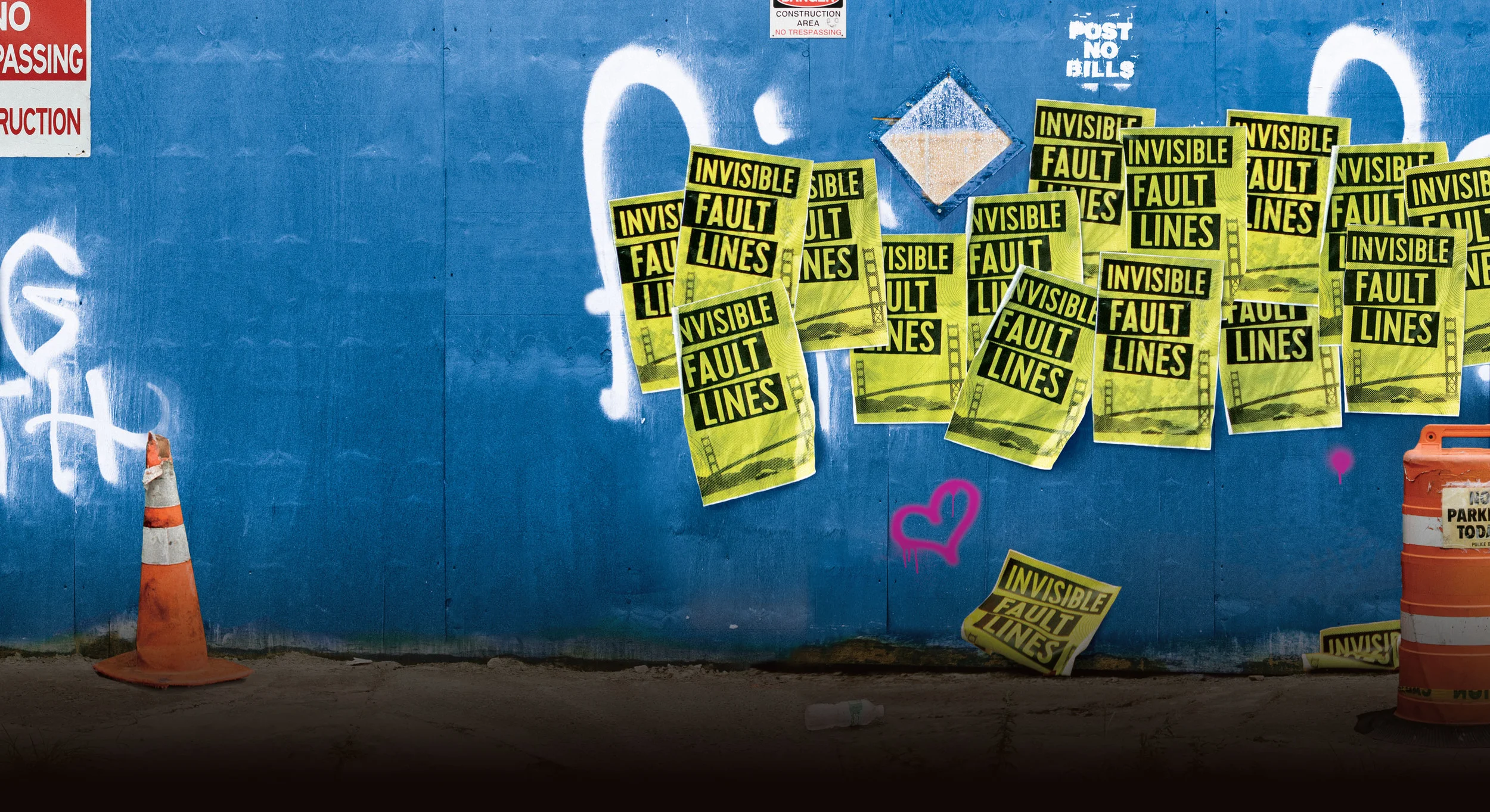“My father disappeared on a Tuesday that should’ve been like any Tuesday, but eventually became the Tuesday my father disappeared.”
Invisible Fault Lines
A YA LITERARY NOVEL
After weeks with no information, Callie decides to investigate her father’s disappearance. Maybe there was an accident at the construction site he oversaw? Maybe he doesn’t remember who he is and is lost wandering somewhere? But after seeing a familiar face in a photo from the Great San Francisco Earthquake of 1906, she wonders if the answer is something else entirely.
Hailed by Judy Blume as a "remarkable young novelist," Kristen-Paige Madonia, author of Fingerprints of You, explores how to rebuild a life after everything seems lost.
Purchase the Book
The Making of: A Behind the Scenes Q&A
Q: Where did your inspiration come from when you began writing Invisible Fault Lines?
A: Invisible Fault Lines is a novel about a 17-year-old girl, Callie Pace, whose father goes to work one morning and doesn’t come home. For me, the novel started with my interest in exploring loss, but not the traditional kind of loss -- not death or love lost -- but ambiguous loss: when a person disappears but there is no verification of their death. In that kind of situation, you’re grieving the loss of someone, but you’re also navigating unanswered questions… the “why” of it, the endless cycle of hope and then discouragement. Callie is constantly wrestling with the not-knowing, and that was interesting to me. There’s hope in the unknown just as much as there is heartache, and I wanted to explore that dynamic. She’s grieving, but she’s also searching for answers and for some kind of resolution.
Q: The novel takes place in San Francisco in 2006. Why did you choose to set your story there?
A: I think as authors there are a lot of decisions that we get to make – for example, we chose which point of view to use depending on which one will serve the story best. We choose how many subplots to add or how important of a role the love interest will play. But I’m of the mindset that a story starts with setting, so for me I never picked San Francisco; it was always an integral part of the original idea. I can’t begin to imagine the characters or to create the events of the story if I don’t know the location first. From the beginning, I knew that the Great Earthquake of 1906 was going to provide an opportunity for my characters, so the story always belonged in San Francisco.
Q: Callie becomes fixated on the San Francisco Earthquake of 1906, and in a way the book could be labeled a hybrid contemporary-historical novel, as it incorporates so much information about that event. How did you become interested in the 1906 earthquake?
A: The book is set in 2006, which was the 100th anniversary of the earthquake, and like Callie, I was living in San Francisco during that time. There was a specific kind of energy in the city then – a heightened awareness of hope and how much the city had survived, how well it had been rebuilt and had thrived, but also an awareness of our vulnerability. There were memorials and tributes and art exhibits commemorating the earthquake during the 100th anniversary, so if you lived there, you were always partly thinking of what had happened before, of the history and how, in a sense, it could happen again at any time. When a traumatic event of that scale occurs, I believe the people who live in the area are forever linked to it, and I wanted to use that to help fuel my writing. I was also interested in contemplating the differences in the way we handle natural disasters now and how they were handled then. Communication was so limited that, unlike today, there was a significant amount of time before anyone knew exactly what had happened and how far the damage had spread. Now we have protocols and systems in place to react to this kind of disaster, but back then they didn’t, and that was especially interesting to me – that struggle to make sense of the event and to cope with the aftermath.
Q: Without giving away any spoilers, how much of the novel is autobiographical?
A: In John Green’s novel, The Fault in Our Stars, he reminds the reader at the beginning of the book that the story is fiction – he confronts the question of autobiographical influence by stating that neither novels nor readers benefit from attempting to discover what facts may be hiding inside a story. Trying to do so, he says, attacks the very idea that imagined stories can matter. I love that. And I agree – there is nothing to be gained by insinuating fiction is not as equally important or authentic as works based on autobiographical experiences. But I also understand that readers wonder about an author’s life and about the practice of mining personal details for literature. So here goes…
The emotional aspects of the book, of any work I write, are autobiographical – I don’t think the novel would be as good if the emotional roots were fictionalized. Like Callie, I’ve experienced both loss and love. I also have a deep curiosity about the influence of history and the lasting impact of historical natural disasters on modern society. I’m fascinated by the undeniable links between the past and the present and the scientific possibility of simultaneous existence. Like her, I find a great deal of solace in music and art and believe that music works the same ways books do – it can rescue you when you want to escape from your life, and it can also make you feel less alone when you feel isolated. And like Callie, I enjoy camping, have wonderful friends who I rely on when I find myself struggling, and consider Squat & Gobble hands down one of the most delicious places to eat in San Francisco. But the book is a work of fiction.







